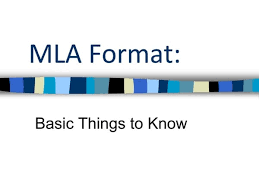
WHAT IS MLA STYLE?
MLA Style establishes standards of written communication concerning:
- formatting and page layout
- applying stylistic technicalities (e.g. abbreviations, footnotes, quotations)
- citing sources
- preparing a manuscript for publication in certain disciplines.
WHY USE MLA?
Using MLA Style properly makes it easier for readers to navigate and comprehend a text through familiar cues that refer to sources and borrowed information. Editors and instructors also encourage everyone to use the same format so there is consistency of style within a given field. Abiding by MLA's standards as a writer will allow you to:
- Provide your readers with cues they can use to follow your ideas more efficiently and to locate information of interest to them
- Allow readers to focus more on your ideas by not distracting them with unfamiliar or complicated formatting
- Establish your credibility or ethos in the field by demonstrating an awareness of your audience and their needs as fellow researchers (particularly concerning the citing of references)
WHO SHOULD USE MLA?
MLA Style is typically reserved for writers and students preparing manuscripts in various humanities disciplines such as:
- English Studies - Language and Literature
- Foreign Languages and Literatures
- Literary Criticism
- Comparative Literature
- Cultural Studies
